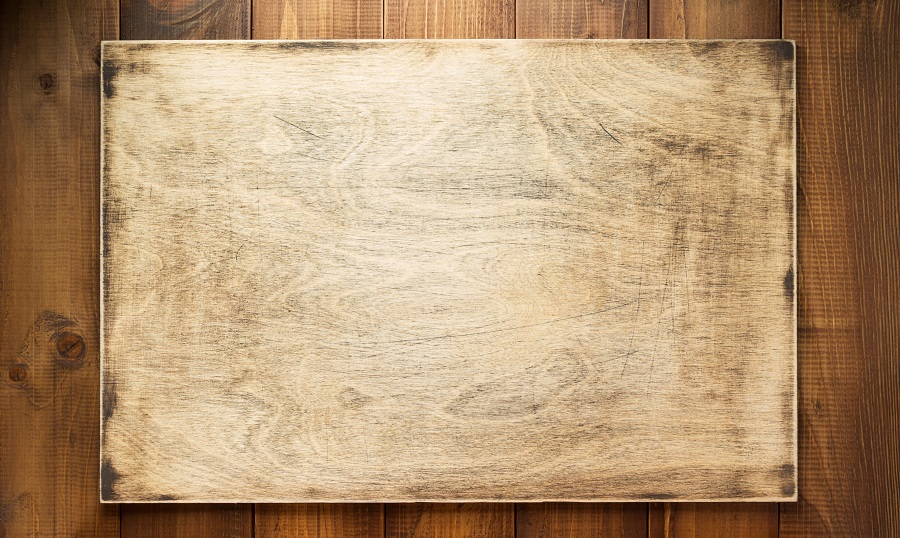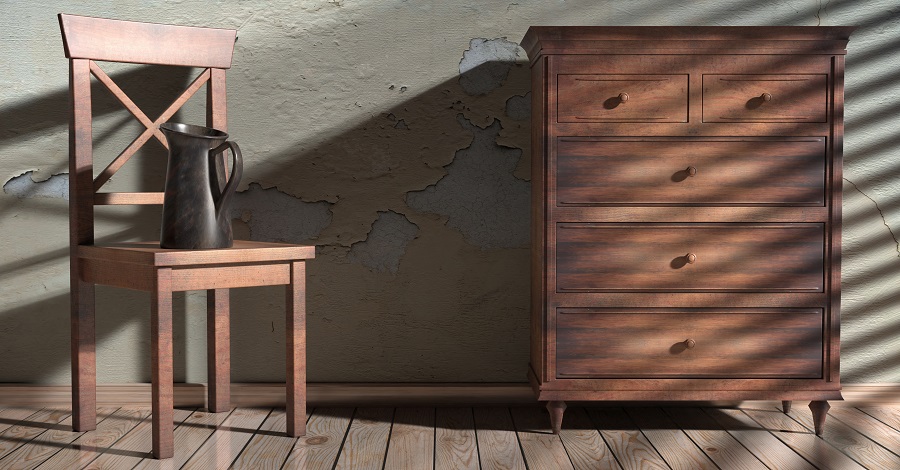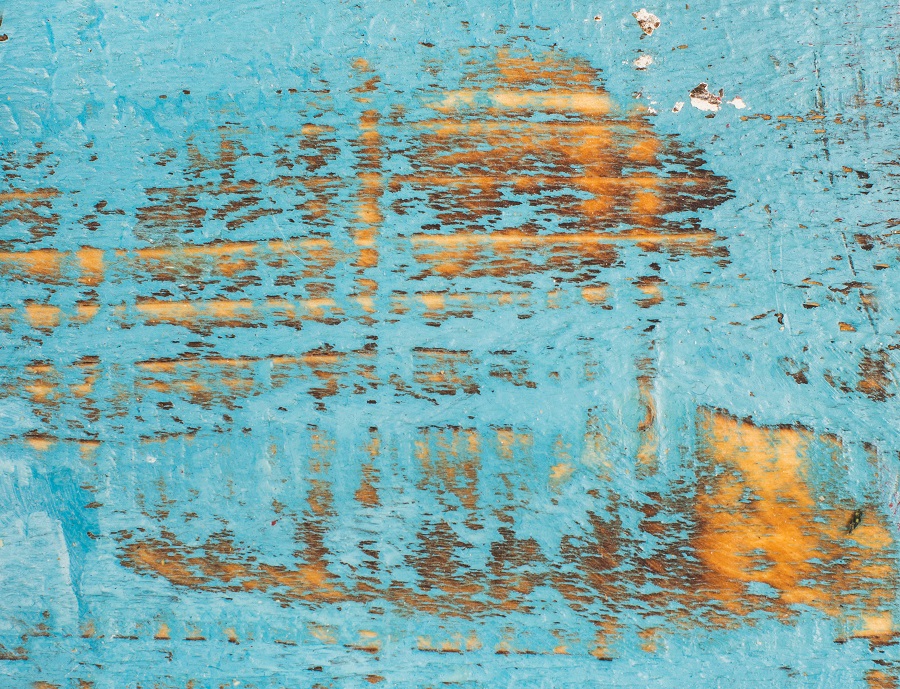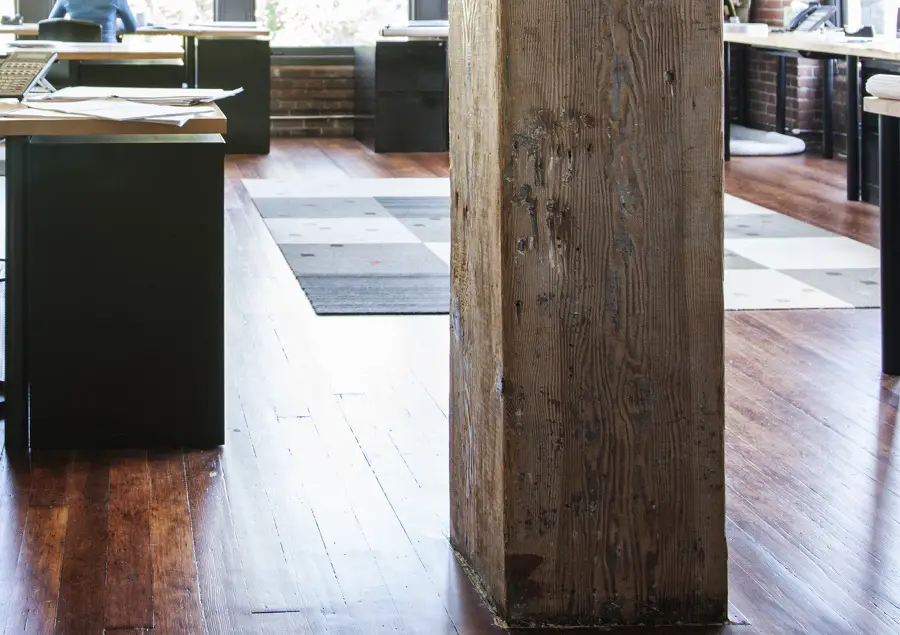I was asked how to achieve an aged white look on the panelled ceiling of an outdoor terrace, the panelling already fitted. Painting the ceiling is already a difficult job, so a simple antiquing method that does not involve sanding patinas or a lot of labour would be more suitable. The most handy would be to apply a coat of coloured wax over the white paint. So here I will tell you more about the possibilities of wood ageing with wax, in other articles pointing more to its role as a surface protection material.

Dark coloured wax is suitable for giving furniture a weather patina
The old appearance of a surface is caused by heavy use or a long period of time during which the furniture or wooden object has been subjected to dust deposits followed by regular cleaning. During this time the paint covering the surfaces also ages and darkens. Bumps, scratches or other such marks appear. After a while, the colour no longer looks clean and dirt collects in the curls of rubbed patterns or weather marks. No matter how well maintained, time leaves a patina that cannot be removed from the surface of furniture and objects.
This look can be reproduced as a finish, and the easiest can be done with dark wax. Do not use black wax because it is far too dark resulting in a harsh, unnatural look. Dark brown, reddish brown or grey waxes are more suitable. Sometimes for a more advanced ageing, suggesting fine mould in places, green, blue or red wax is used. It is, however, a finish recommended for those with experience in the field and know how to harmonise colours and effects so that everything looks very natural.
If coloured wax is applied to a freshly painted surface, even if it is glossy, it will be very difficult to remove completely by wiping the surface with a soft, clean cotton cloth. The remaining traces will give a slightly dirty look to the surfaces, similar to that installed after a long period of time. If the surface has millings, carvings, cornices or other patterns, wax will build up in those areas and be much harder to remove. It should be worked carefully and insisted on as much as possible to avoid an exaggerated effect.

Colourless wax to remove coloured waxes more easily, but also for special effects or protection
To remove wax more easily from hard-to-reach places, a trick can be used. A thin layer of colourless wax is applied before the coloured wax. Leave 30-45 minutes between coats so that the colourless wax hardens and does not mix with the coloured wax. The coloured wax will no longer penetrate so deeply into grooves or contoured areas, as the colourless wax is already there. Wiping will be simpler and the desired effect can be easily achieved.
Colourless wax can be used to achieve other effects. For example, if we want a distressed effect more accentuated, i.e. the top layer of paint can be easily removed on a larger surface, a very thin layer of colourless wax is applied beforehand. The paint will have no adhesion and will be removed with a simple, more vigorous wipe.
Clear wax is a very good protective option for finished surfaces. It has no mechanical, chemical and thermal resistance, but it works as a first coat that precoats light mechanical shocks. If they are not strong it is sufficient to apply another coat of wax to restore the surface to its original appearance. However, if you want to repaint or varnish the entire piece of furniture, the wax will have to be removed by sanding and wiping with thinner. Otherwise, as we have already seen, the paint or varnish will not adhere.

Use brush for profile application and soft cloth for flat surfaces
The waxes can be applied with a cloth, sponge or brush. Adapting the method to the surface will make it much easier to achieve the desired effect. For contoured surfaces it is much better to use a brush with not very soft bristles. The brush bristles will easily penetrate the profiles, waxing all over.
If the surface is flat, it is best applied with a soft cotton cloth. Old, quality T-shirts are best, especially if they are white. Wax is applied in circular motions, then wiped along the grain. It can be polished using the same soft cloth, giving a silky look.
How to get the ceiling with aged white finish
Let's go back to the original problem - how could we achieve a distressed white panelled ceiling. I was talking about the signs of the weather where dirt gets in and is brought out this way. We'll do this using new wood. The position is difficult, so we're going to drop the wood antiquing and we will make use of its imperfections. White sanding will not be done to achieve a smooth, flawless surface but only to remove coarse roughness. A 100 or 120 grit sanding is sufficient. Even though the final surface will be very fine, being a ceiling, it will not be noticeable.
A coat of white water-based paint is first applied to the wood. The paint is used undiluted so as not to add extra water that will raise the wood grain. Apply a single coat of paint with a brush or trowel. You should achieve a sufficiently coated surface without covering the natural grain of the wood. If the paint does not cover very well and the colour of the wood is still visible, apply another coat of paint.
After the paint is thoroughly dry, apply wax. If the panelling is profiled, it is best to use colourless wax first. If not, use coloured wax directly and then wipe with a clean cloth. If the application is done in circular motions first, the coloured wax will penetrate all the imperfections in the wood, highlighting them. Finally, for a natural look, the wood should be wiped along the grain.
For a credible effect, the ceiling (and wooden objects in general) should be seen as a whole. The aim is not to achieve an identical effect on each plank, but to achieve the same old effect on the whole ceiling. It is good to check the effect on a small piece of plank beforehand, but it should be reproduced on the ceiling as a whole.
Remember! An old-fashioned effect is all the more believable the more natural and unforced it is.



























Add comment